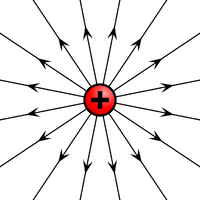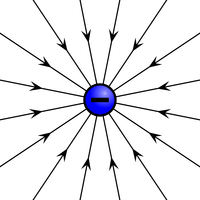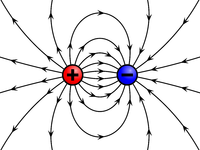Difference between revisions of "Electrostatic Field"
(→Key Stage 3) |
|||
| Line 16: | Line 16: | ||
To see the [[Electrostatic Field]] created by a '''charge''' click on the picture below to play a PHET simulation. | To see the [[Electrostatic Field]] created by a '''charge''' click on the picture below to play a PHET simulation. | ||
{| class="wikitable" | {| class="wikitable" | ||
| − | |[[File: | + | |[[File:PhetCharges.png|centre|300px|link=https://phet.colorado.edu/sims/html/charges-and-fields/latest/charges-and-fields_en.html]] |
|} | |} | ||
Latest revision as of 15:30, 8 December 2019
Contents
Key Stage 3
Meaning
An Electrostatic Field is the region around a charged object which can affect another charged object.
About Electrostatic Fields
- The Electrostatic Field around a Positive Charge is shown with arrows pointing away from the charge.
- The Electrostatic Field around a Negative Charge is shown with arrows pointing towards the charge.
To see the Electrostatic Field created by a charge click on the picture below to play a PHET simulation.
Key Stage 4
Meaning
An Electrostatic Field is the region around a charged object in which another charged object will experience a force.
About Electrostatic Fields
- The Electrostatic Field around a Positive Charge is shown with arrows pointing away from the charge.
- The Electrostatic Field around a Negative Charge is shown with arrows pointing towards the charge.
To see the Electrostatic Field created by a charge click on the picture below to play a PHET simulation.



